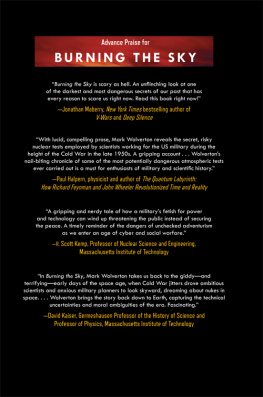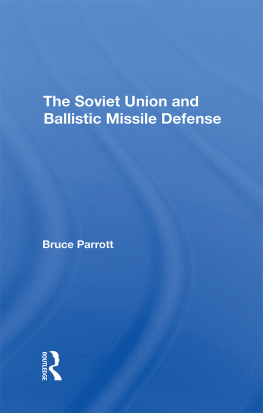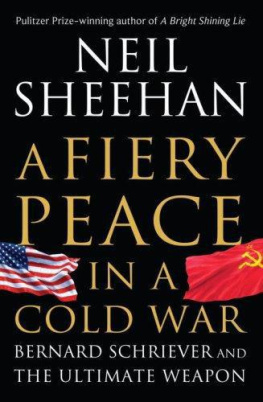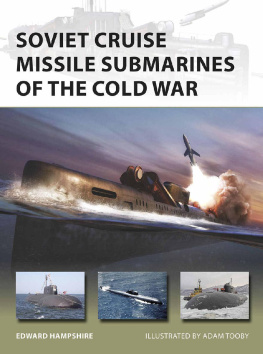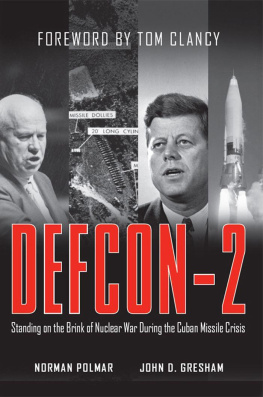This edition first published in hardcover in the United States in 2018 by
The Overlook Press, an imprint of ABRAMS
195 Broadway, 9th floor
New York, NY 10007
www.overlookpress.com
Abrams books are available at special discounts when purchased in quantity for premiums and promotions as well as fundraising or educational use. Special editions can also be created to specification. For details, contact or the address above.
Copyright 2018 by Mark Wolverton
All rights reserved. No part of this publication may be reproduced or transmitted in any form or by any means, electronic or mechanical, including photocopy, recording, or any information storage and retrieval system now known or to be invented, without permission in writing from the publisher, except by a reviewer who wishes to quote brief passages in connection with a review written for inclusion in a magazine, newspaper, or broadcast.
ISBN 978-1-4683-1418-2
BURNING THE SKY
Operation Argus and the Untold Story of the
Cold War Nuclear Tests in Outer Space
MARK WOLVERTON
with 21 b&w and 9 color images and 5 maps
A fter the Soviet Union proved to the US that it possessed an operational intercontinental ballistic missile with the launch of Sputnik in October 1957, the world watched anxiously as the two superpowers engaged in a game of nuclear one-upmanship. In the midst of this rising tension, Nicholas Christofilos, an eccentric Greek-American physicist, brought forth an outlandish, albeit ingenious, idea to defend the US from a Soviet attack: launching nuclear warheads to detonate in outer space, creating an artificial radiation belt that would fry incoming Soviet ICBMs. That idea became Operation Argus, the most secret and riskiest scientific experiment in history, and classified details of these nuclear tests have been long obscured.
In Burning the Sky, Mark Wolverton tells the unknown and controversial story of this scheme to reveal a fascinating narrative that still has powerful resonances today. He chronicles Christofiloss unconventional idea from its inception to execution, when the scientist persuaded the military to carry out the dangerous testusing the entire Earths atmosphere as a laboratory. Combining his investigation of recently declassified military documents with more than a decade of experience in researching and writing about the science of the Cold War, Wolverton examines the scientific, political, and environmental implications of Argus, as well as that of the atmospheric tests that followed. He also discusses the roles played by physicist James Van Allen and President Eisenhower in the scheme, and how the whistleblowing journalists at the New York Times blew the lid off what was supposed to be Americas ultimate nuclear secret.
Burning the Sky is an engrossing read that will intrigue any lover of scientific or military history and will remind readers why Operation Argus remains frighteningly relevant nearly sixty years later.
A Life in Twilight:
The Final Years of J. Robert Oppenheimer
The Depths of Space:
The Story of the Pioneer Planetary Probes
The Science of Superman:
The Official Guide to the Science of
the Last Son of Krypton
The national security complex became, in the Eisenhower years, a fast-growing apparatus to allow us to do in secret what we could not do in the open.
D AVID H ALBERSTAM , The Fifties
There is the sky, which is all mens together.
E URIPIDES
Earth changed in the black sky.
It caught fire.
Part of it seemed to come apart in a million pieces, as if a gigantic jigsaw had exploded. It burned with an unholy dripping glare for a minute, three times normal size, then dwindled.
What was that? Sam looked at the green fire in the sky.
Earth, said Elma, holding her hands together.
That cant be Earth, thats not Earth! No, that aint Earth! It cant be.
You mean it couldnt be Earth, said Elma, looking at him. That just isnt Earth. No, thats not Earth; is that what you mean?
Not Earthoh no, It couldnt be, he wailed.
He stood there, his hands at his sides, his mouth open, his eyes wide and dull, not moving.
R AY B RADBURY , The Martian Chronicles
Introduction:
The Middle of Nowhere
A SIDE FROM THE T RISTAN DA C UNHA ARCHIPELAGO, CONSISTING OF THE MAIN island of Tristan da Cunha, the Nightingale islands, Gough Island, and Inaccessible Island, most of the various other tiny chunks of rock in the South Atlantic Ocean are so small and insignificant that no one has ever bothered to grace them with proper names. Only about three hundred people have ever resided permanently on Tristan da Cunha at any given time, and most of the other islands are either wholly uninhabited by humans or populated only intermittently by small scientific or meteorological crews. The islands have been a territory of the United Kingdom since the early nineteenth century, and over the years have sheltered visiting fishermen, whalers, naturalists, fugitives, and even an occasional prince or other royalty.
On the morning of September 9, 1958, some of Tristans inhabitants were out on the slopes of the islands long-dead volcano, tending their potato patches. One of them was G. Francis Harris, who also happened to be the official administrator of the island, officially appointed by the Foreign Office back in London. Suddenly, Harris and his fellow islanders glanced up from their planting, distracted by an unusual phenomenon in those parts: the sound of airplane engines.
Two planes with US Navy markings swept overhead, low enough that the pilots could be seen peering curiously below. The friendly islanders tried waving to them, but the planes responded by abruptly turning back out to sea. This was thought odd and most unfriendly, Harris later recounted, particularly since the islanders had not seen an aeroplane for 15 years, apart from a helicopter, and so they were most surprised.
Harris instructed the islands radio operator to try to pick up any unusual signals that might help to figure out what was going on. He found the airwaves alive with enigmatic coded transmissions, but attempts to contact the senders were ignored. All was in code, but we were able to advise the Royal Navy in South Africa about unusual activity, and quote to them the call signs of three or four American destroyers, Harris said. From his account, the islanders were rather put out by the experience. It caused a good deal of consternation, he noted. We were never told why they should have been in our area without telling us, or why they appeared so unfriendly, or why they did not pay us a social call! he complained.
Not until almost two years later, in July 1960, would Harris and the other residents of Tristan da Cunha find out the answers, when New York Times science reporter Walter Sullivan thought to contact them to ask if theyd happened to notice anything odd going on back in summer 1958. Barely two weeks before the decidedly antisocial US Navy airplanes buzzed the ancient volcanic island, in the depths of a cold and stormy South Atlantic midnight at the end of August 1958, an atomic bomb had been detonated about sixty miles south and three hundred miles above Tristan. Over the ensuing fortnight, two more burst in the night sky, the last only two days before Tristan da Cunhas aerial flyby.
The islanders had enjoyed front row seats for what was then the most secret Cold War operation in the world, a massive undertaking that would later be revealed to the public as the greatest scientific experiment of all time.

